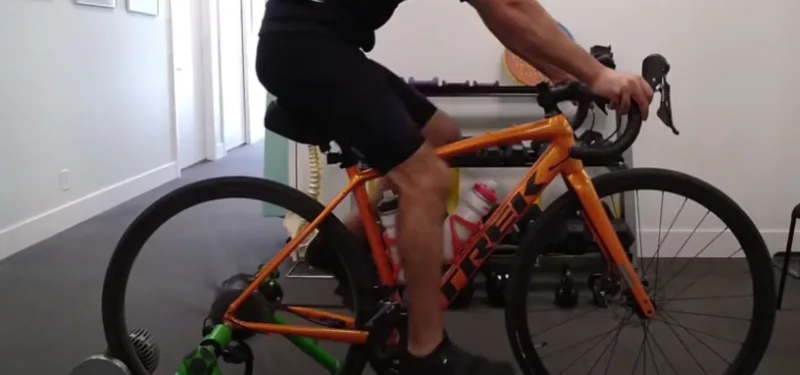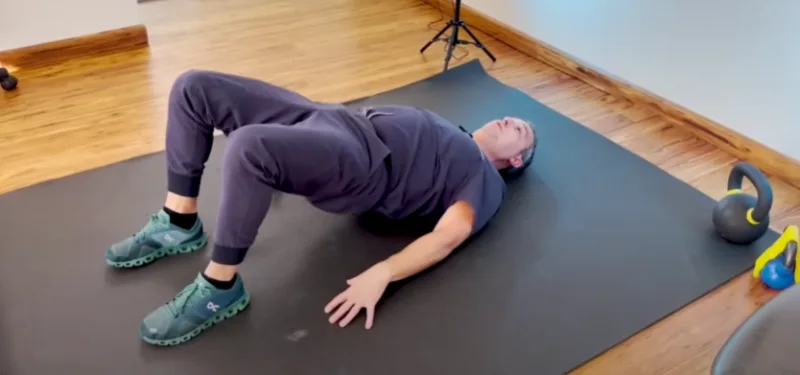Cycling is a great way to support your pelvic floor and improve pelvic prolapse symptoms. However, when done too often and over long periods, the continuous weight and pressure on the pelvic floor can lead to a prolapse.
Cycling can lead to pelvic floor complications, resulting in discomfort, reduced performance, urinary incontinence, and pelvic pain. These issues can significantly affect cyclists and their overall well-being.
This blog post delves into research findings on how cycling affects the pelvic floor and explores potential risks associated with this activity. We also discuss ways to Maintain Pelvic Floor Health while Cycling.
Is Cycling Bad For Pelvic Floor: 4 Impact
Cycling can hurt specific areas of the body, including the pelvic floor. Understanding the impact of cycling on pelvic floor health is crucial for recreational and professional cyclists to ensure a balanced approach to their fitness routines. In this comprehensive guide, we delve deep into research findings regarding the pelvic floor’s effect on cycling:
Pressure Distribution
An essential aspect of the effect cycling has on the pelvic floor is the distribution of pressure exerted on it. Research studies have shown that prolonged and intense cycling can lead to increased pressure on the perineum, which is the region between the anus and the external genitalia. This pressure can impact the nerves and blood vessels in the pelvic floor, potentially leading to discomfort and even injury.
Muscle Activation
Cycling involves repetitive movements of the lower body, engaging various muscles, including those on the pelvic floor. While cycling can help strengthen these muscles, improper cycling techniques or excessive strain can contribute to muscle tension and potential issues, such as pelvic floor dysfunction.
Saddle Design
The bicycle saddle design plays a significant role in determining the impact on the pelvic floor. Studies have indicated that saddles that are too narrow, too soft, or improperly positioned can increase the pressure on the perineum, exacerbating pelvic floor issues. Proper saddle selection and change are essential for minimizing adverse effects on pelvic floor health.
Gender Disparities
Research has also highlighted gender-specific differences in the pelvic floor’s response to cycling. Women may be more susceptible to pelvic floor disorders because of anatomical variations, hormonal influences, and childbirth-related factors. Understanding these disparities is essential for tailored approaches to promoting pelvic floor health in both male and female cyclists.
4 Potential Risks Of Cycling Bad For Pelvic Floor
Despite the many benefits of cycling, there are potential risks associated with the sport, especially concerning pelvic floor health. Cyclists must know these risks and take preventive precautions to protect their pelvic floor. Some of the potential risks include:
- Urinary Dysfunction: Cycling has been linked to urinary issues such as incontinence, frequency, and urgency. Cyclers’ pressure on their bladders and pelvic floors during cycling can contribute to these problems, affecting urinary function in both men and women.
- Genital Numbness: Prolonged or intense pressure on the perineum can lead to genital numbness, indicating nerve compression or reduced blood flow to the genital region. This sensation can be uncomfortable and concerning for cyclists, highlighting the importance of proper saddle selection and fit.
- Erectile Dysfunction: Male cyclists may be at risk of developing erectile dysfunction because of the pressure exerted on the perineum and nerves responsible for sexual function. The reduction of blood flow to the genitals can affect erectile capabilities and sexual performance in some male cyclists.
- Pelvic Pain: Chronic or acute pelvic pain is a potential risk for cyclists, especially if they experience discomfort or pressure in the pelvic region while riding. Pelvic pain can disrupt daily activities and may require medical attention to address underlying causes.
7 Tips for Maintaining Pelvic Floor Health while Cycling
You can stay active while cycling and enjoy the outdoors, but paying attention to your pelvic floor health while engaging in this activity is essential. Repeated motions and pressure placed on the pelvis region during cycling can lead to issues if not appropriately managed. To help cyclists maintain their pelvic floor health, here are some essential tips to consider:
Your Bicycle Seat
Choosing the right bicycle seat is crucial for maintaining pelvic floor health. Opt for a seat that fits your anatomy well and provides adequate support. A seat that is too narrow or too soft can increase pressure on the perineum, leading to discomfort and potential pelvic floor issues. You should get your bike fitted by a professional to ensure your seat is positioned correctly.
Handlebar Height
The height and position of your handlebars can also impact pelvic floor health. Incorrect handlebar height can cause you to lean too far forward, pressuring your pelvic area. Adjusting your handlebar height ensures you are cycling in a neutral spine position. This change can help distribute your weight more evenly and reduce strain on your pelvic floor muscles.
Regular Breaks
Regular breaks during long rides can help alleviate pressure on your pelvic floor. Stand up on your pedals periodically to allow the blood to flow to the pelvis and to relieve prolonged pressure on the perineum. Frequent breaks also allow your muscles to relax and prevent overuse injuries.
Watch Your Posture
Maintaining proper posture while cycling is essential for pelvic floor health. Avoid rounding your lower back or tilting your pelvis forward, as this can increase pressure on the pelvic floor muscles. Your back should be straight, your shoulders relaxed, and your core engaged to support your spine. An upright posture can help disperse weight and reduce strain on the pelvic area.
Breathing
Focus on your breathing while cycling to support your pelvic floor muscles. Deep diaphragmatic breathing can help stabilize your core and pelvic floor, providing better support during your rides. Breathing shallowly or holding your breath will increase tension in the pelvic region. Practice coordinated breathing with your pedaling rhythm to promote relaxation and proper muscle engagement.
Pelvic Floor Exercises for Cyclists
Exercise for the pelvic floor can strengthen these essential muscles and improve their endurance. To enhance pelvic floor function and stability, Kegel exercises, pelvic tilts, and bridges are practical exercises for cyclists. Consistent practice of these exercises can help prevent pelvic floor dysfunction and support your performance on the bike.
Hygiene and Self-Care Practices
Maintaining good hygiene practices is crucial for preventing infections and discomfort in the pelvic region. After cycling, remove your cycling shorts and wash the area with mild soap and water to prevent bacterial growth. Wearing clean, moisture-wicking clothing can also help keep the pelvic area dry and reduce the risk of skin irritation.
Conclusion
Cycling is undeniably beneficial for overall fitness and well-being, but it’s crucial to be mindful of how it affects your pelvic floor health. By understanding the pressure distribution, the importance of proper saddle design, and the gender disparities in cycling’s effects, you can take proactive steps to protect yourself.
Remember to choose the right bike seat, adjust your handlebars, take regular breaks, maintain good posture, focus on breathing, incorporate pelvic floor exercises, and practice good hygiene. Cycling offers many health benefits for your pelvic floor, and these strategies can help you minimize potential risks. So gear up, ride smart, and keep your pelvic floor happy and healthy.
FAQs
Do Pelvic Floors Make You Tighter?
After childbirth, many women feel their vagina is no longer as tight as it once was and want to undergo surgery to fix this. A littlet of tautness can be achieved by performing Kegel exercises.
What Exercises Strengthen The Pelvic Floor?
Exercises That Strengthen the Pelvic Floor:
- Bird Dog
- Kegels
- Bridge Pose
- Squats
- Pelvic Tilts


![4 impacts and four potential risks of cycling on the pelvic floor [7 tips for maintaining it]](https://cacyclinghub.com/wp-content/uploads/2024/08/Is-Cycling-Bad-For-Pelvic-Floor-1-e1723100867684.webp)


